This week’s theme is artificial light. This can include flash, indoor lighting, video lights, or whatever else you can find (street lights, flashlights, sparklers, etc.) The examples below are lit by (from L-R for each row): indoor tungsten lighting in a pub, indoor fluorescent lighting in a store, subtle bounce flash on the couple with tungsten lighting in the background, harsher off-camera flash on the couple with tungsten background lighting that’s mostly drowned out by the flash being so bright, video light at front-side, video light behind the subject and mostly natural light on her face.
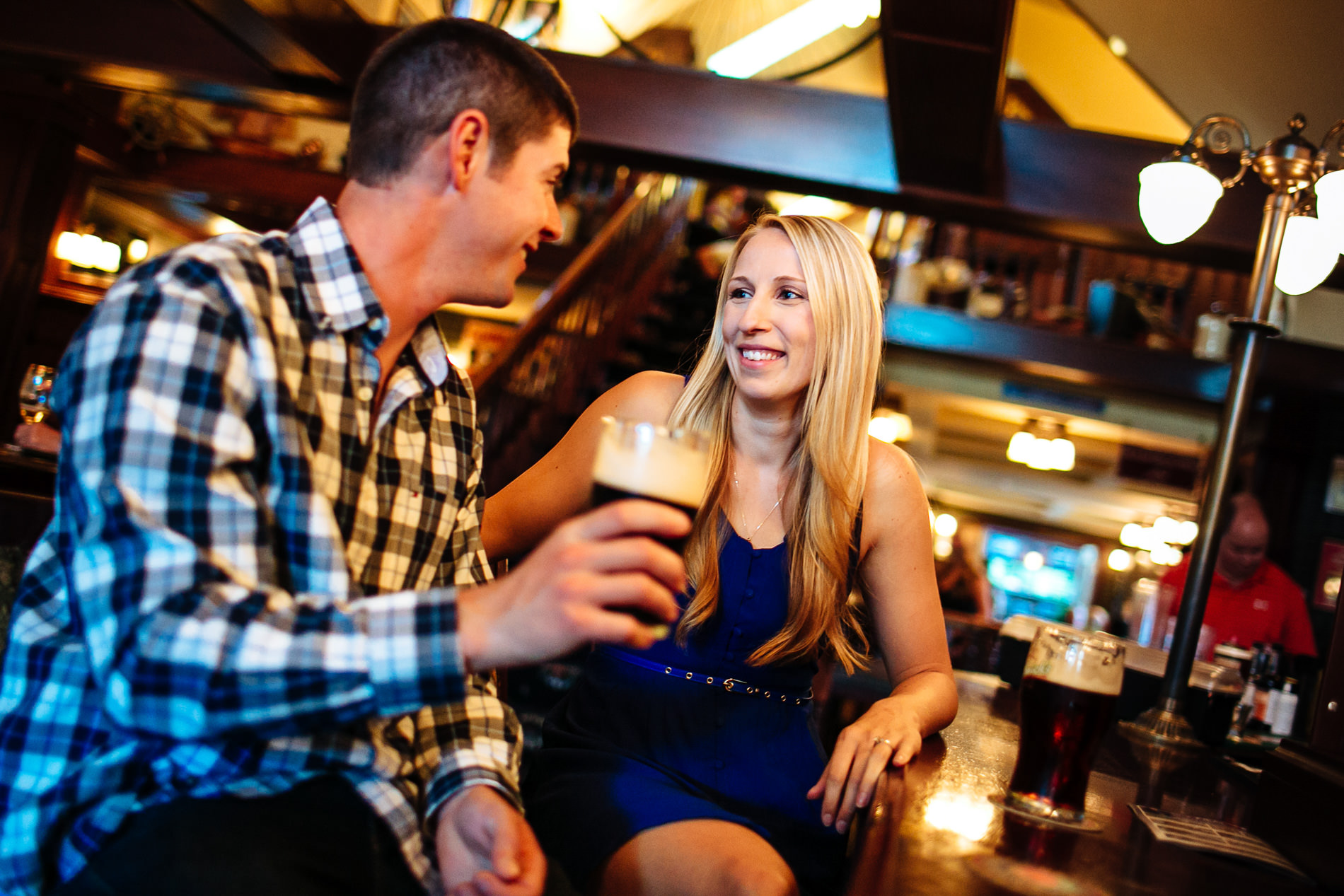
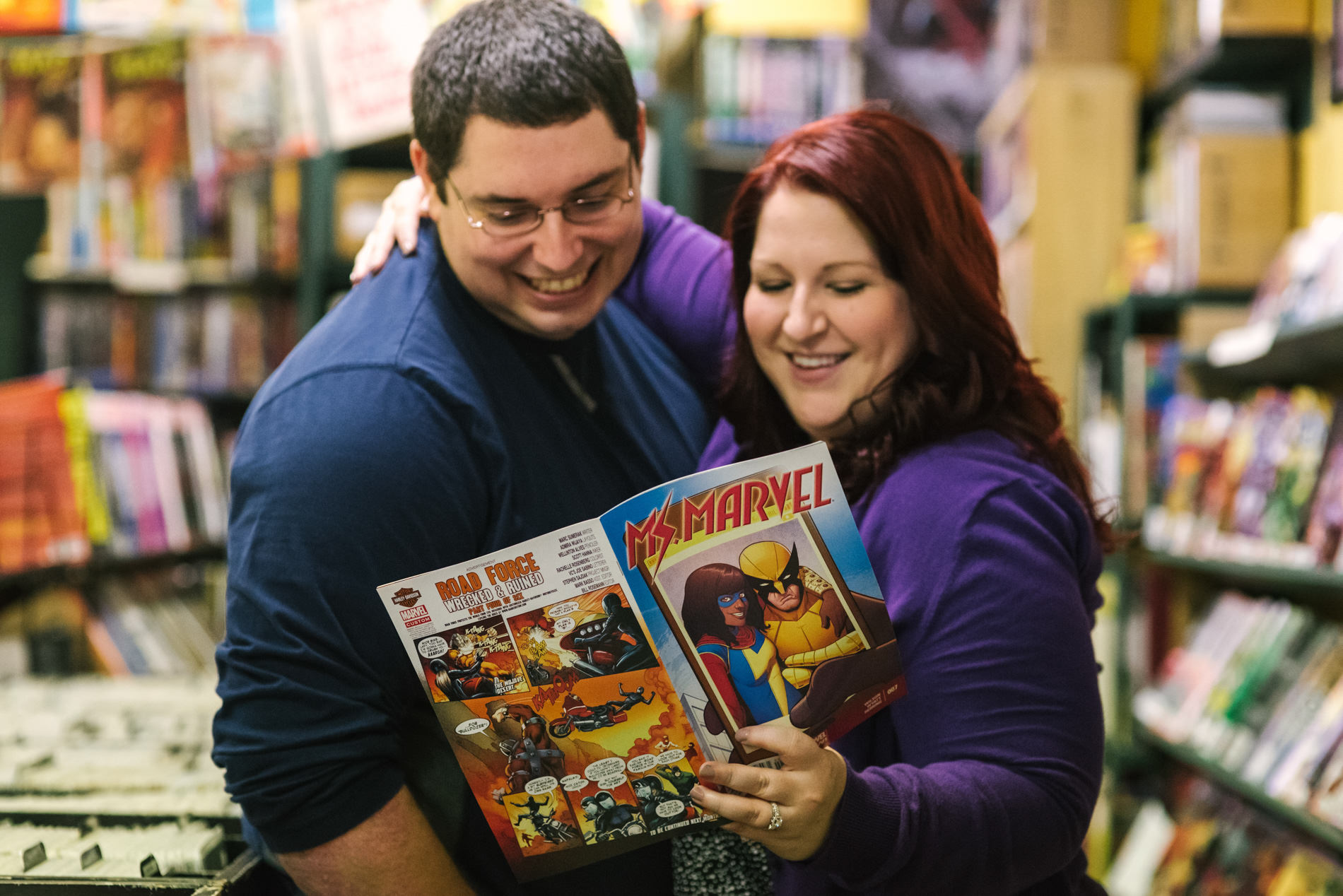
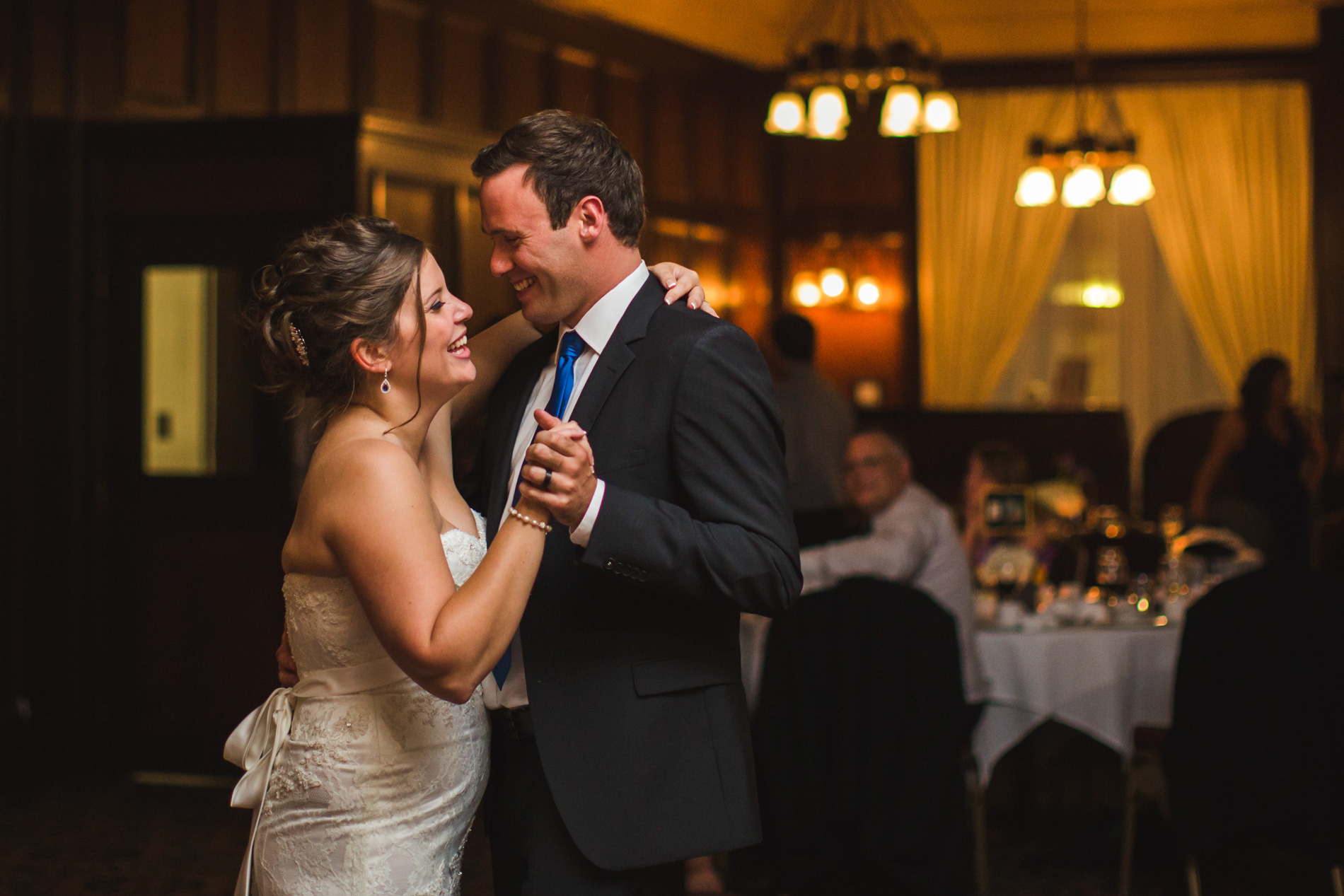
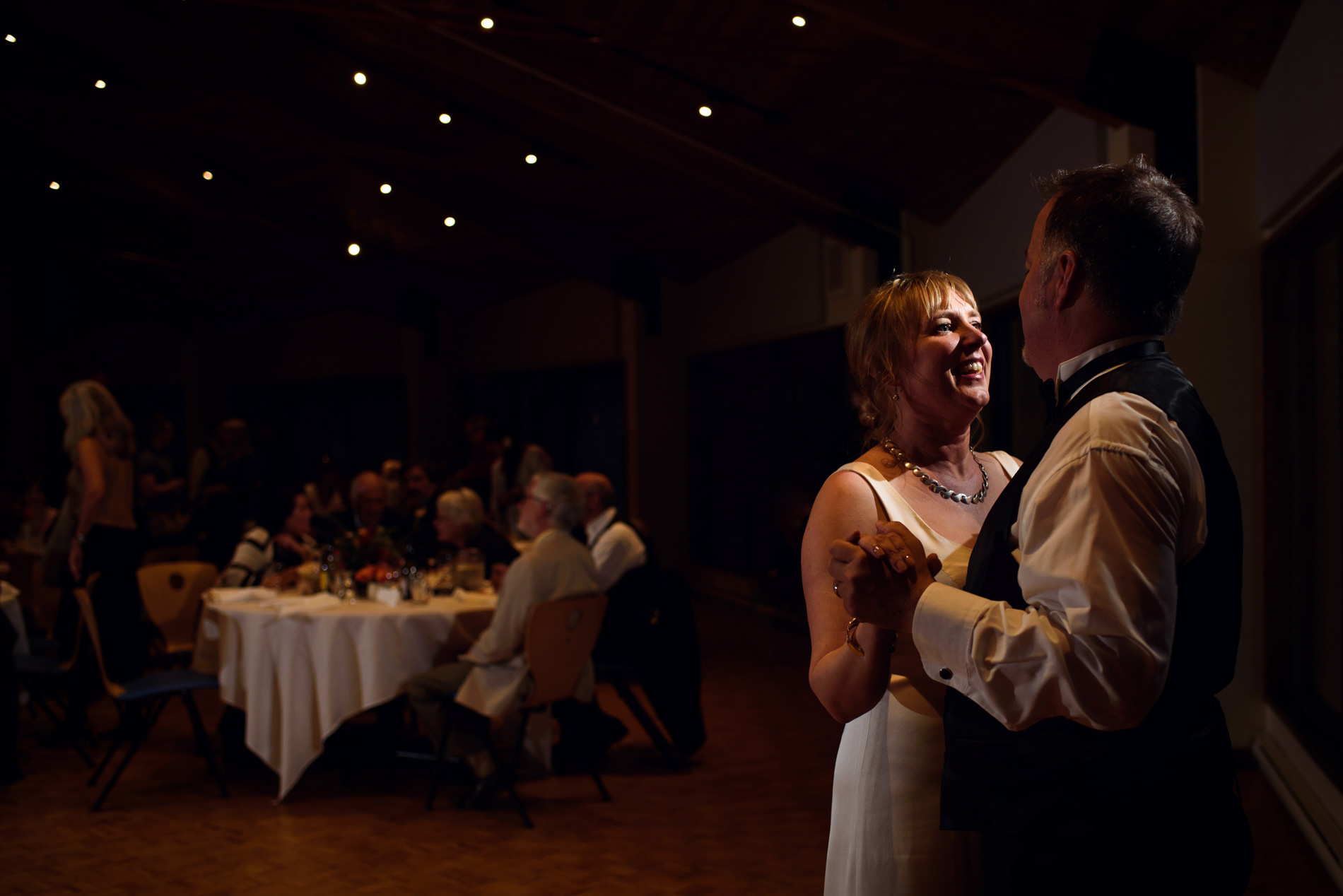
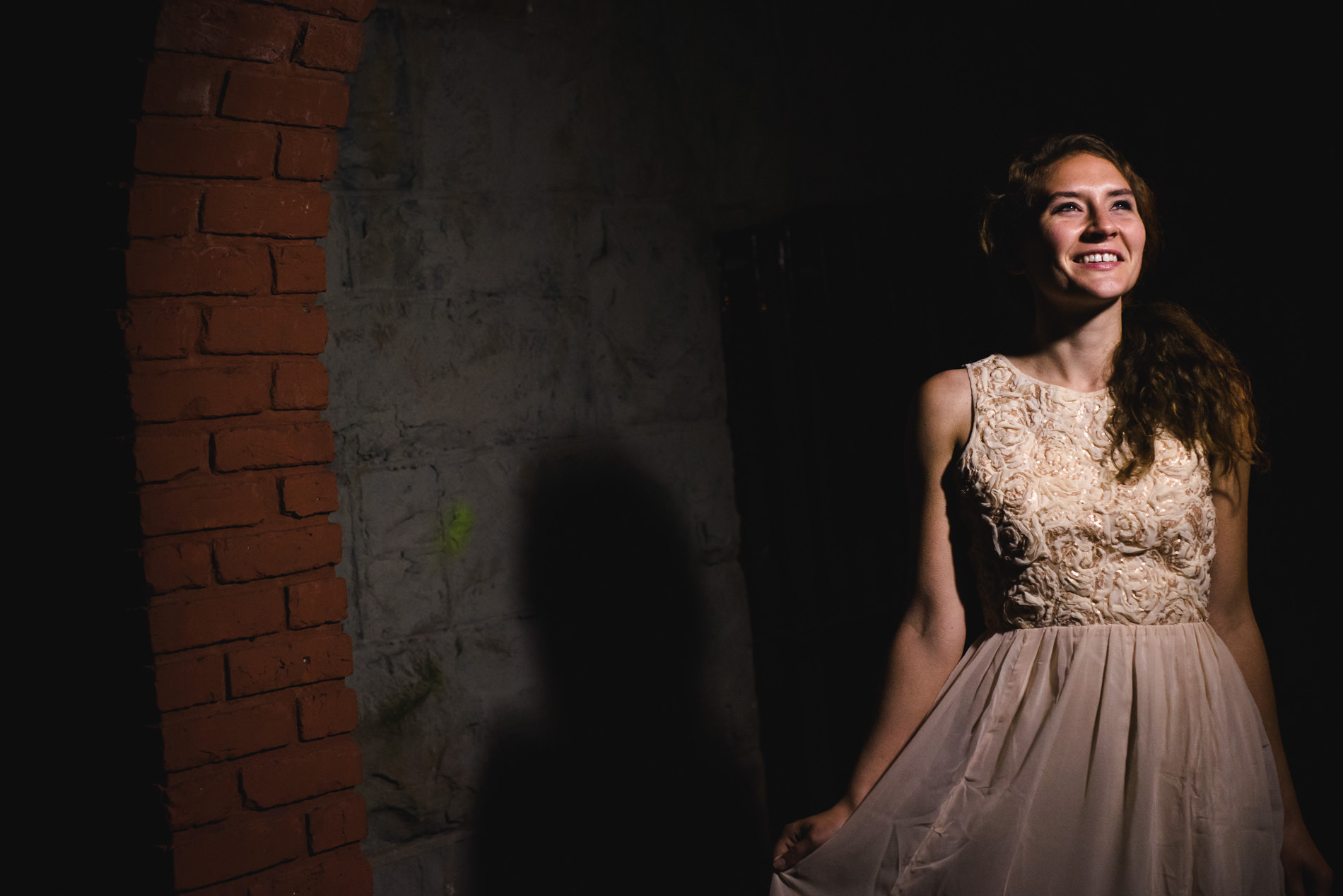
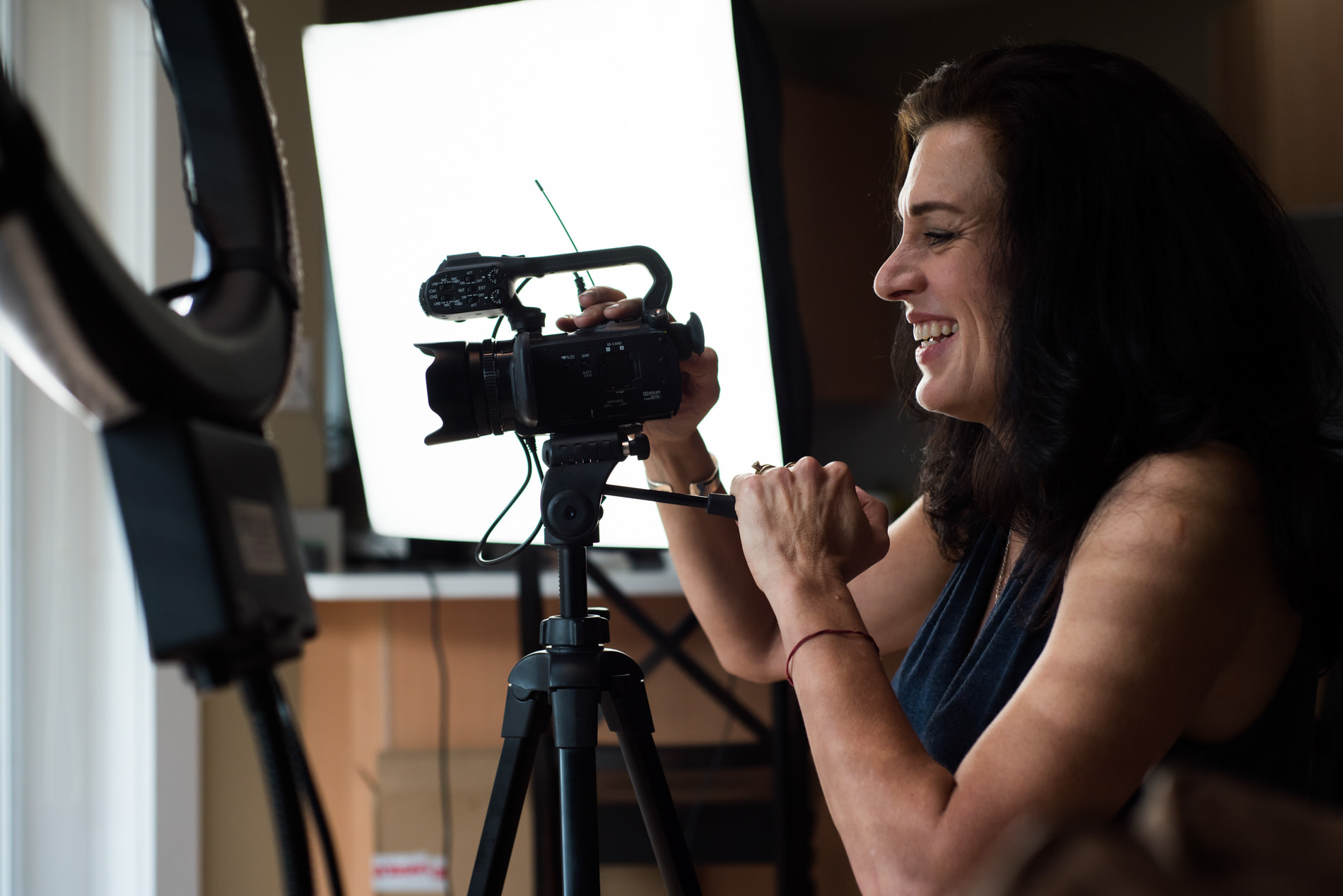
Here are some tips on using artificial light:
- I might have talked about this when talking about window light, but be careful with mixed lighting. If you have indoor lighting and a lot of window light, you might end up with weird colours or skin tones. This is why I generally prefer to use natural light in the daytime (and turn off indoor lighting) and use indoor lighting alone at night. Fluorescent like they use in offices and stores tend to have weird colours either way, but tungsten and compact fluorescent lights are decent if there’s no other colours of light interfering.
- Try using flash. If you have an external flash, you can point it at the ceiling or walls if they’re a neutral colour. This turns the ceiling or walls into a big, flattering light source. That’s what I did in the third image (with the couple dancing with a visible background). I exposed a bit darker than I would with no flash and then added some subtle flash, pointed at the ceiling, to put a nice, clean light on the couple. The image to the right of it was under exposed a lot, then off-camera flash was added to the side to create a more dramatic light on the couple. The background lighting (ambient exposure) is determined by your exposure before adding flash. The exposure of the subjects is determined by the flash and the ambient light combined. So if you set your exposure to be close to a proper exposure without flash, your flash will be less powerful and create a more natural-looking effect.
- I used a video light in the last two images. Actually, the first was at a meetup lead by Christina Craft and someone else held the light and the second, I just used the light that the videographer set up. But sometimes I use my own video lights as an easy light source. Video lights are great because they provide a constant light source so you can see what your lighting will look like before you take the photo. Flash takes a bit more trial and error. If you don’t have an actual video light, you can try using a flashlight, a lantern, a lamp, or a shop light for a similar effect (though probably not as powerful).
If you have any questions, join us in the Facebook group. I’ll be checking in there daily to see your work and help you achieve the best results.
If you’re just finding this now, you can check out the full list and more information on the challenge here. You can follow me on Instagram at @documentyourdaytoday and use the hashtag #dtd52weeks so others doing the challenge can see your work.
